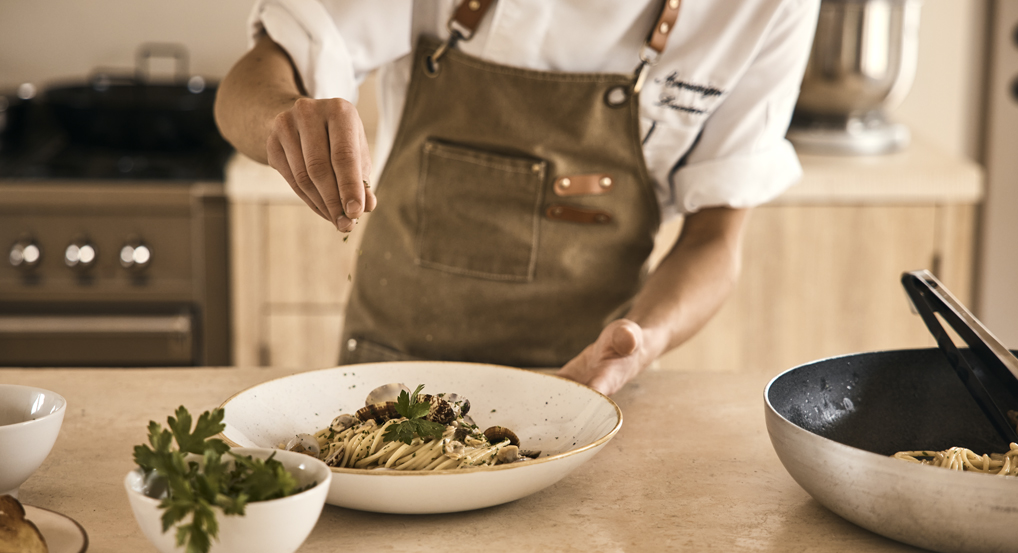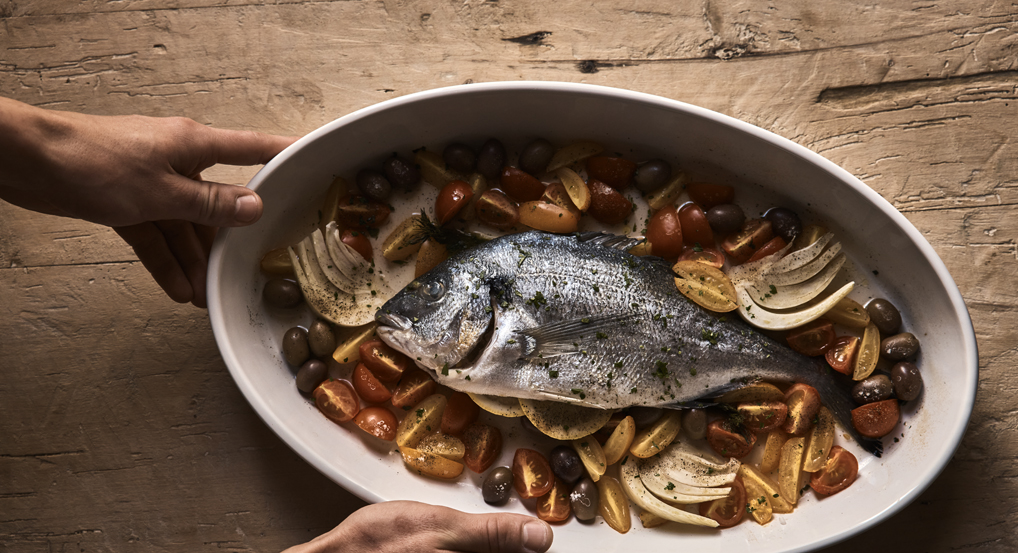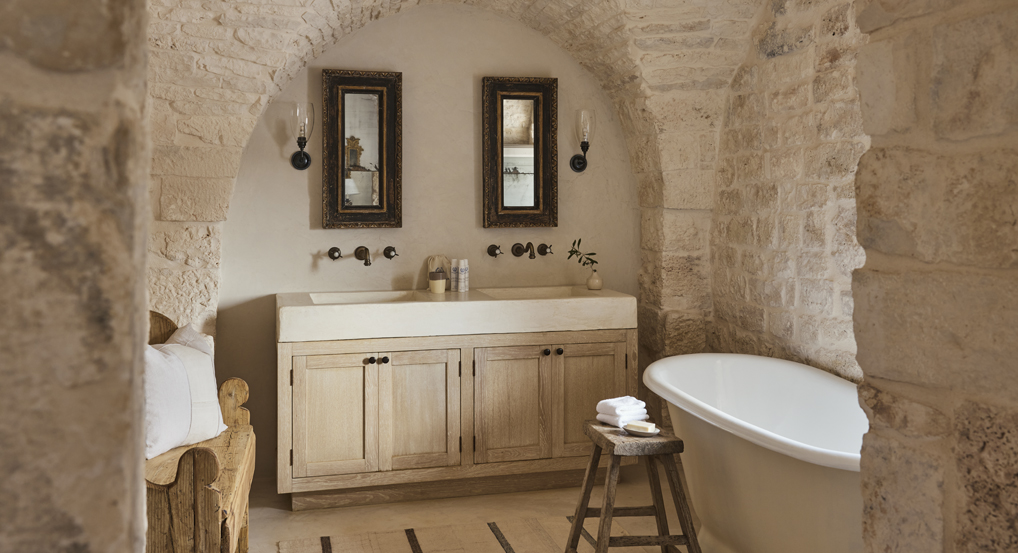• Monopoli sits tranquilly overlooking the Adriatico sea much as it must have done when it was part of the Marine
Republic of Amalfi and Venice between the 11th and 15th centuries. Head straight to the small port, or Molo
Vecchio, where the traditional fishing boats still shore up for the night and marvel at the recently restored
‘golden’ walls of the castle which contrast spectacularly with the blues of the of the sea and sky. This and the
surrounding fortifications date from 1552. Orignally part of ancient Peucezia, Monopoli enjoyed important
influence over the territory south of Bari following the destruction of Egnazia. Also worth a visit is the Abbey
Castle of Santo Stefano three kilometers south east of Monopoli. Here the Vie Traiana and Minucia arrived at
ancient Diria. Do take time to see the Museum of ‘Vases from Egnazia’.
• Alberobello stands to the southern part of Bari province, near Castellana Grotte, Locorotondo and Putignano. The
town was founded in the 15th century by Acquaviva-D’Aragona, two counts of Conversano, on land that was
originally an oak forest. A typical feature of Alberobello are the trulli, white dry-stone houses with conical roofs
made of lapidary stones. Inside, the trulli have a square central room communicating with the other rooms of the
house via arches. Many trulli in Alberobello can be visited and the tallest trullo in the area, Trullo Sovrano, is on
two floors and houses a museum. The roofs of the trulli are embellished with decorations and pinnacles of
various shapes, often symbolising religious signs or signs of the zodiac.In 1996, Unesco made the town of
Alberobello a world heritage site.
• Parco Naturale Regionale Dune Costiere da Torre Canne a Torre San Leonardo Expansive parkland featuring
beachfront dunes, wetlands, wildlife & centuries-old olive groves.
• Bari. Bari Vecchia is a walled city crowded on a peninsula jutting into the sea. There was no room for expansion
and the resulting overcrowding has meant that life is lived on the streets. Wander down the narrow alleyways you
will feel like walking through someone’s living room, or well, everyone’s living room. Entire families from
grandparents to babies sat outside their homes chatting, playing, napping, while washing dangled from
balconies and scooters whizzed past. It’s not just relaxing and socialising that takes place in the streets. In the mornings they become a pasta factory
as women sit at tables outside their homes making the typical Puglian pasta orecchiette. These “little ears” are
made by rolling the dough into thin logs, cutting off a chunk with a knife and shaping it by hand—all at an
impressively rapid pace. If you get lost in Bari Vecchia, look down. The black stone pavement was laid to help
visiting merchants navigate their way out after market day; the white limestone paving will take you deeper into
the maze. Don’t forget to taste the focaccia smeared with roasted cherry tomatoes, olives and glistening with
local olive oil.
• Ostuni, La Città Bianca, the white city, is one of Puglia’s most beautiful cities, a tumble of white-washed buildings
perched strategically atop a hill with views of the endless olive trees in the Valle d’Itria countryside, and the
glimmering Adriatic Sea. The medieval walled city was built without a plan, and it shows. The web of streets is
confusing, a maze of alleyways, staircases and arches. Buildings were built on top of each other, and the archways
support the houses they connect, making up for the lack of strong foundations. You turn one way and find a
dead end, another and get a glimpse of the sapphire sea. Puglia has seen a stream of invaders—Greeks, Romans,
Goths, Byzantines, Normans—and the labyrinth of Ostuni is the perfect way to confuse the enemy. The stark white
buildings are dazzling in the southern sun and are brightened by vivid green and blue wooden doors, pots of red
geraniums and cacti. In the 17th century a plague killed millions in the area and infected houses were painted
white by mixing limestone dust with water. Locals noticed that there was less illness around the white houses
and attributed it to a miracle; most likely it was the antibacterial effect of the calcium carbonate. Nowadays the
white houses attract tourists and the local government encourages everyone to repaint every two years by paying
or half the cost.The main street in Ostuni is lined with boutiques and souvenir shops selling local olive oil and
Salentino sandals, but the best way to experience the town is by diving down the narrow side streets and like the
invaders once did, getting lost.
The Salento
• The Salento is a hot, dry peninsula at the southern tip of Puglia. Its geographical isolation has meant that it has
developed a strong identity with its own cuisine, traditions and music, influenced by its Greek past. Along with
some of Italy’s best beaches there are some fascinating towns to explore.
• Lecce is known for its exuberant baroque architecture in the golden Leccese stone of the area, its churches
lavishly decorated with cherubs, gargoyles and gri_ns, and delicately carved columns and cornices. Lecce is one
of Puglia’s larger cities but it’s still a walkable size, and it manages to be both lively and relaxed.
• Otranto has a stunning coastal location where you can combine morning visits to churches with an afternoon
swimming in the clean, impossibly turquoise sea. It’s just 72 km from Albania and its location has resulted in
many invasions, the worst of which was the Turkish siege in 1480 when they destroyed much of the city and
tortured and killed its people. Otranto’s principal attraction is the Cathedral with its mosaic floor built in
1163-1165— it survived the Turkish invasion although parts of the Cathedral were destroyed. It’s one of the largest
mosaics in Europe and covers the entire floor. Its central motif is the Tree of Life, supported at the base by
elephants, a symbol of purity, with branches telling different pagan and biblical stories. Another tree near the
front of the church depicts heaven on one side and grizzly scenes from hell on the other. In the chapel you can
see the human remains of the 800 martyrs who resisted the Turkish invasion and refused to convert to Islam. The
empty sockets of hundreds of skulls stare down at you in stark contrast to the beauty of the mosaic floor.
• Gallipolli’s old town is on a island connected by a causeway to the mainland. It has a relaxed, elegant vibe, some
stunning churches, and a golden curve of sand right in the centre of town, plus many more along the
surrounding coast. It was ruled by the Greeks for five centuries between 7th and 2nd century BC, but all signs of
their existence were destroyed by the Romans and most of the architecture seen now is from the Middle Ages.
Other than leisurely walks along the city’s seafront walls, the most interesting thing to do in Gallipolli is visit
Frantoio Ipogeo in Granafei Palace one of the 35 underground olive presses. It was first used in 1600, excavated
by hand out of the soft rock, to make olive oil for lamps which was exported around the world. You can see the
original equipment used for grinding and pressing the olives and get a sense of what it was like to work in this
dark, damp cave. Blindfolded donkeys were used to work the olive mill and they lived down here with the
workers who smoked weeds and carved little sculptures to distract themselves from the miserable conditions.

































